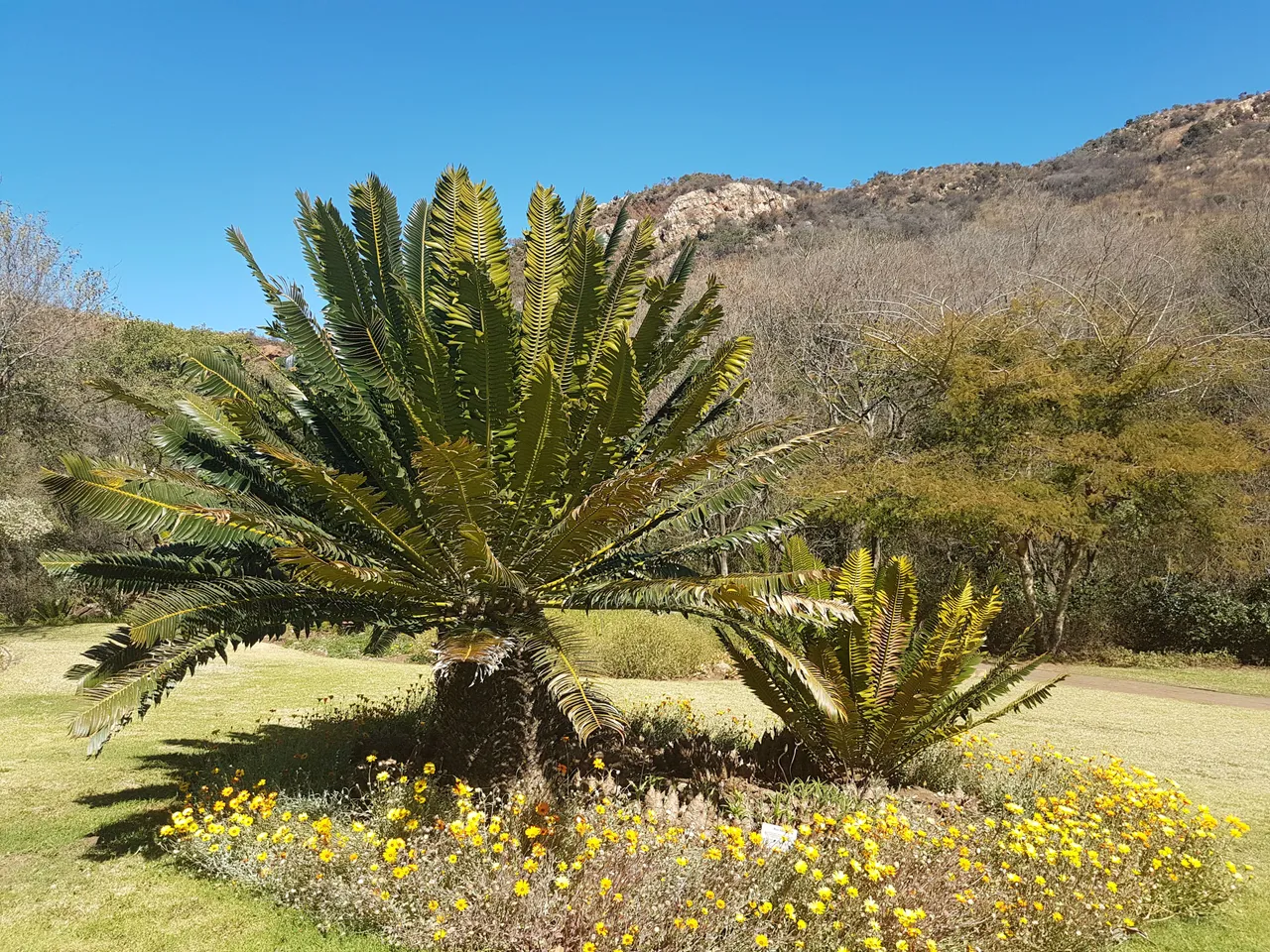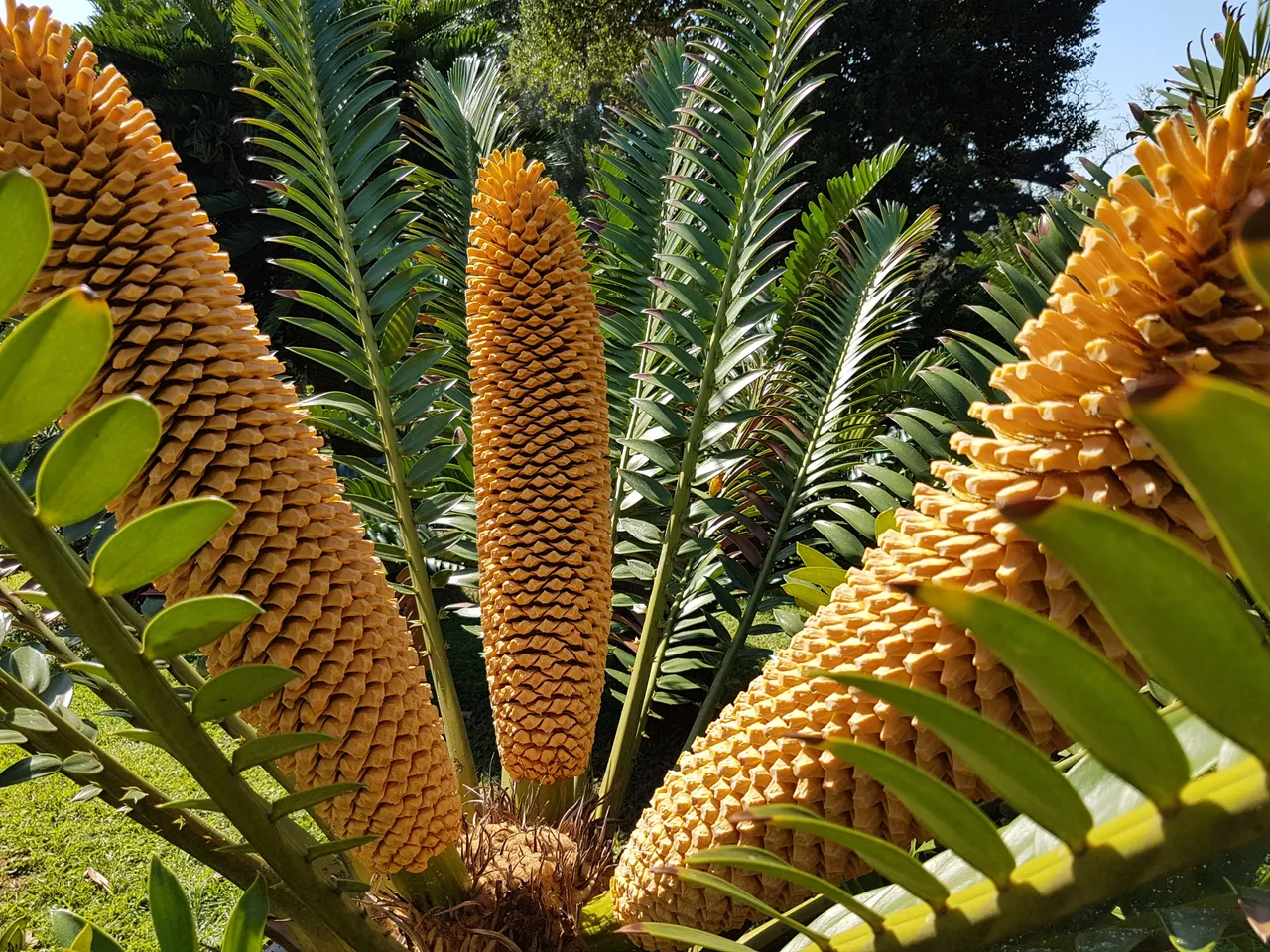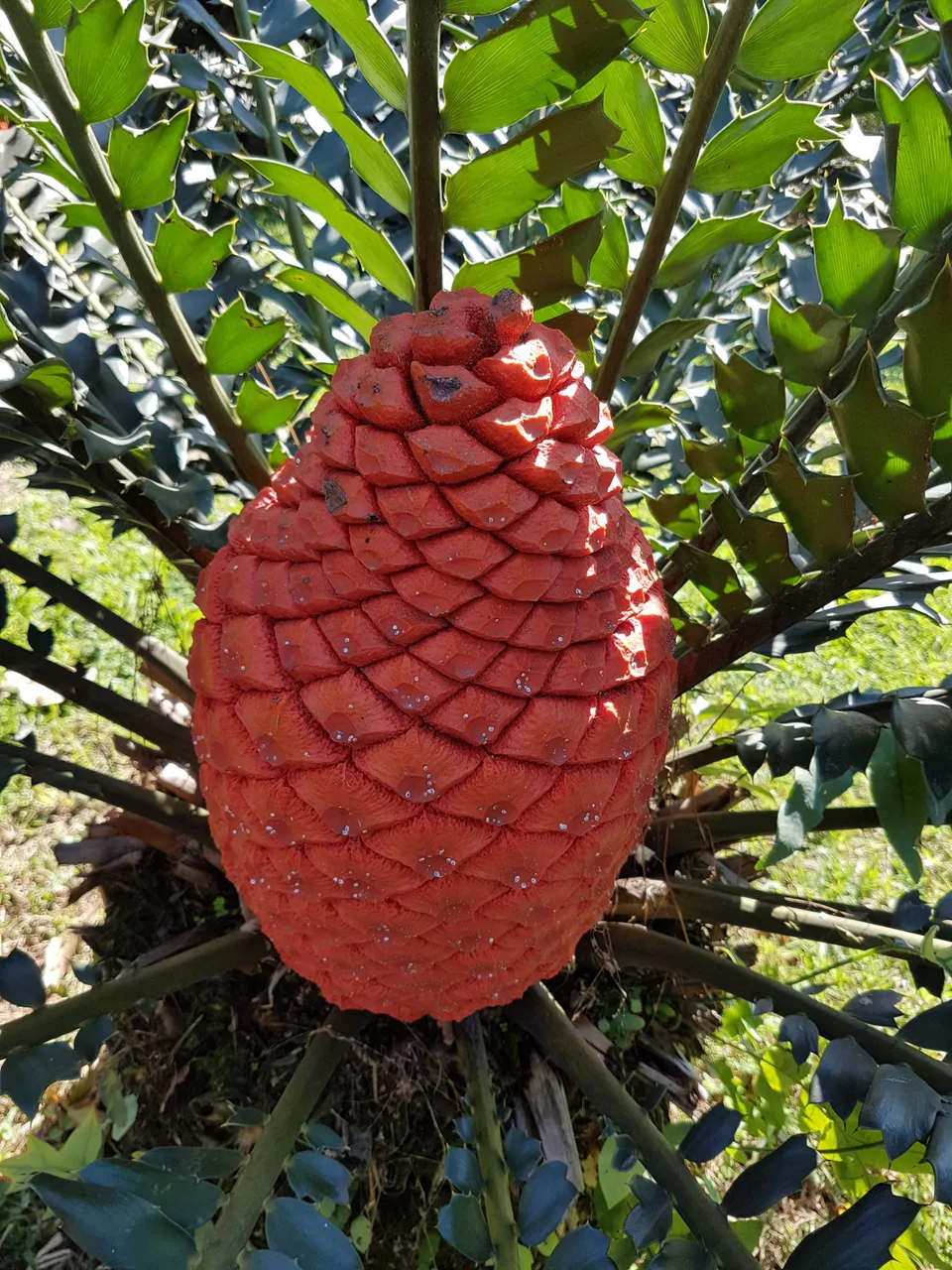
The Cycad thrived in prehistoric times, is a few million years old and can be found in fossil records all over the world. It was the main food source for herbivorous dinosaurs. It is one of the most threatened plant groups on Earth today.
At the San Diego Zoo, they have 108 species of which 78 is endangered. South Africa boasts with 38 cycad species and 68% of them are threatened with extinction. You need a permit to grow the indigenous Encephalartos cycad in your garden.

The name cycad stem from the Greek word ‘cyckos’ meaning palm-like. It is a Conifer/deciduous(needled evergreens - pines, firs and yews) and gymnosperms (naked seeds), their reproductive organs are in their cones and not flowers. The colour of the cone can be anything from green, yellow-green, yellow or salmon, depending on the species and age of the cone. The plant can be male (pollen bearing) or female (seed bearing).
It is a unique slow growing, long-living, lush and exotic looking plant that increases in value as they age and grow. The larger plants can take up to a decade to reach their full size which makes them expensive.

The Cycad is resilient with its tough outer cuticle that prevents moisture loss ideal for the warmer climates. They thrive in well-drained soil and plenty of sun.
Cycads are considered poisonous due to the highly toxic seed kernels in the cone. These toxins can cause liver damage, vomiting, diarrhoea, headaches, dizziness and seizures. The Cycad is edible though after the toxins have been removed carefully. It contains starch in the pith of the trunk which the "Hottentots" (South African Tribe) used as bread dough after fermenting it.
Encephalartos ferox

The Encephalartos Ferox is a popular cultivated cycad, growing close to the ocean - in Natal and Mozambique. It has 15cm long dark green, spine-tipped lobed leaves. They produce dark salmon cones which emerge in succession. The male cone is a 45cm long cylinder and the female cone is about 20-45cm and sessile. They thrive in warmer, humid conditions with well-drained soil.

The two species in my photos I discovered at the Durban Botanical Gardens, it was taken with my Samsung Galaxy S7.